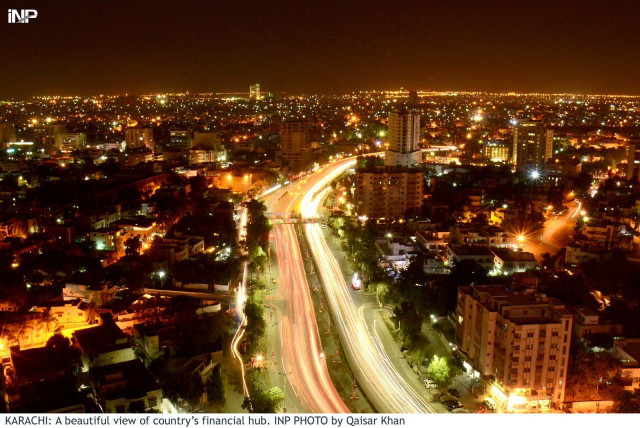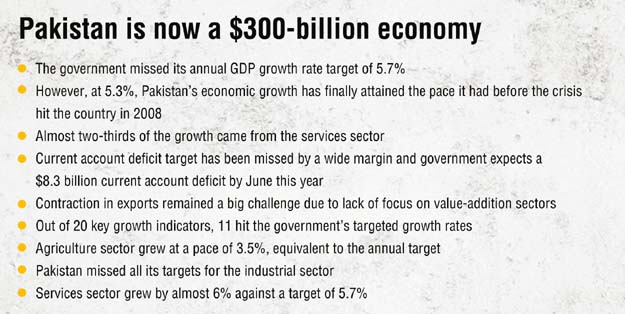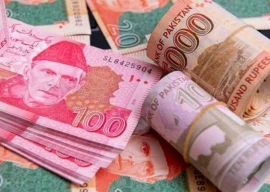
The growth puts the country in the league of economies that have a size of over $300 billion.
Gross Domestic Product, the monetary value of all goods and services produced in one year, is projected to have grown at a rate of 5.28% during the fiscal year 2016-17 ending on June 30, National Accounts Committee (NAC) said.
World bank report: Pakistan among top 10 economies
However, the figure is provisional and subject to variations once the final results are available at the end of the fiscal year.
At 5.3%, Pakistan’s economic growth has finally attained the pace it had before the crisis hit the country in 2008.
For the next fiscal year 2017-18, the government has set the GDP growth target at 6%.
Nonetheless, the PML-N government again missed its annual GDP growth target of 5.7% for the outgoing fiscal year. Yet, the results were better than the forecasts made by international financial institutions.
As a result of over 5% growth rate, the nominal size of Pakistan’s economy increased to $304.4 billion.
Understanding GDP growth
Slightly over two-thirds of the growth - 67% to be precise - came from the services sector, which performed even better than the estimates. The government achieved services and agriculture sectors growth targets but missed the industrial sector growth target despite heavy focus on it.
Despite a better economic performance, the growth rate was still insufficient to absorb the youth bulge and any pace of growth below this rate would increase unemployment. The government also failed to address serious issues like stagnant investments and savings in terms of total size of the GDP and declining exports.
Against the annual target of $24.8 billion, the government has now expected that the exports would remain close to $21.7 billion and even imports are likely to exceed the $45.2 billion projections.

The current account deficit target of $4.5 billion has been missed by a wide margin and now the government expects an $8.3 billion current account deficit by June this year.
The contraction in exports remained a big challenge due to lack of focus on value addition sectors, said Ahsan Iqbal, Federal Minister for Planning and Development on Wednesday. But he said that the government’s focus on energy and infrastructure helped achieve the 10-year high growth rate of 5.3%.
In its 98th meeting, the NAC approved the provisional growth rate for the outgoing fiscal year, revised down the 2015-16 growth rate to 4.5% and approved the final growth figure of 2014-15 at 4.1%, according to NAC documents.
Finance Minister Ishaq Dar will formally announce a provisional growth rate of 5.3% on May 25, with the release of the 2016-17 Economic Survey of Pakistan.
Out of total 20 key growth indicators, 11 hit the government’s targeted growth rates while 9 indicators, primarily in industrial sector, remained below expectations.
Agriculture
After witnessing flat growth in the last fiscal year, the agriculture sector this time performed better due to exceptional growth in forestry and better performance of major important crops. The sector grew at a pace of 3.5%, equivalent to the annual target.
After facing criticism, the ruling PML-N government finally focused on the sector, which paid dividends. The sector employs close to 37% of the labour force.
Production of major crops saw 4.1% growth but in case of other crops, the target was missed as these minor crops witnessed hardly any growth. Cotton ginning remained even better than the 2.5% target and showed 5.6% growth. Livestock also posted 3.4% growth but missed the annual target with a small margin. Forestry sector showed 14.5% growth, which was many times more than the 3% annual target. Fishing sector grew by only 1.2% against 3% target.
Industries
The government missed all its targets set for the industrial sector despite having the most favoured status. There was presumably zero load-shedding for the sector and it also won many incentives from the government.
Agriculture is backbone of our economy: Jhagra
However, against a target of 7.7%, output stood at 5%. The output of large-scale manufacturing stood at 4.9%, below the official target while small-scale manufacturing grew to 8.1%, slaughtering 3.6%, electricity generation and distribution only 3.4% against a target of 12.5%, mining and quarrying sub sector grew only 1.3% against a target of 7.4%. The construction sector grew at a pace of 9% but missed the target of 15.2%.
Services
The services sector, which accounts for more than half the economy, grew by almost 6% against a target of 5.7%. Aided by heavy government borrowing and an increase in the money supply, the financial services sector and government services beat expectations. Wholesale and retail trade posted 6.8% growth against a target of 5.5%. Transport, storage & communication sub sector saw 3.9% growth. Finance and insurance witnessed 10.8% growth against a target of 7.2%.
Published in The Express Tribune, May 18th, 2017.
Like Business on Facebook, follow @TribuneBiz on Twitter to stay informed and join in the conversation.


















COMMENTS
Comments are moderated and generally will be posted if they are on-topic and not abusive.
For more information, please see our Comments FAQ